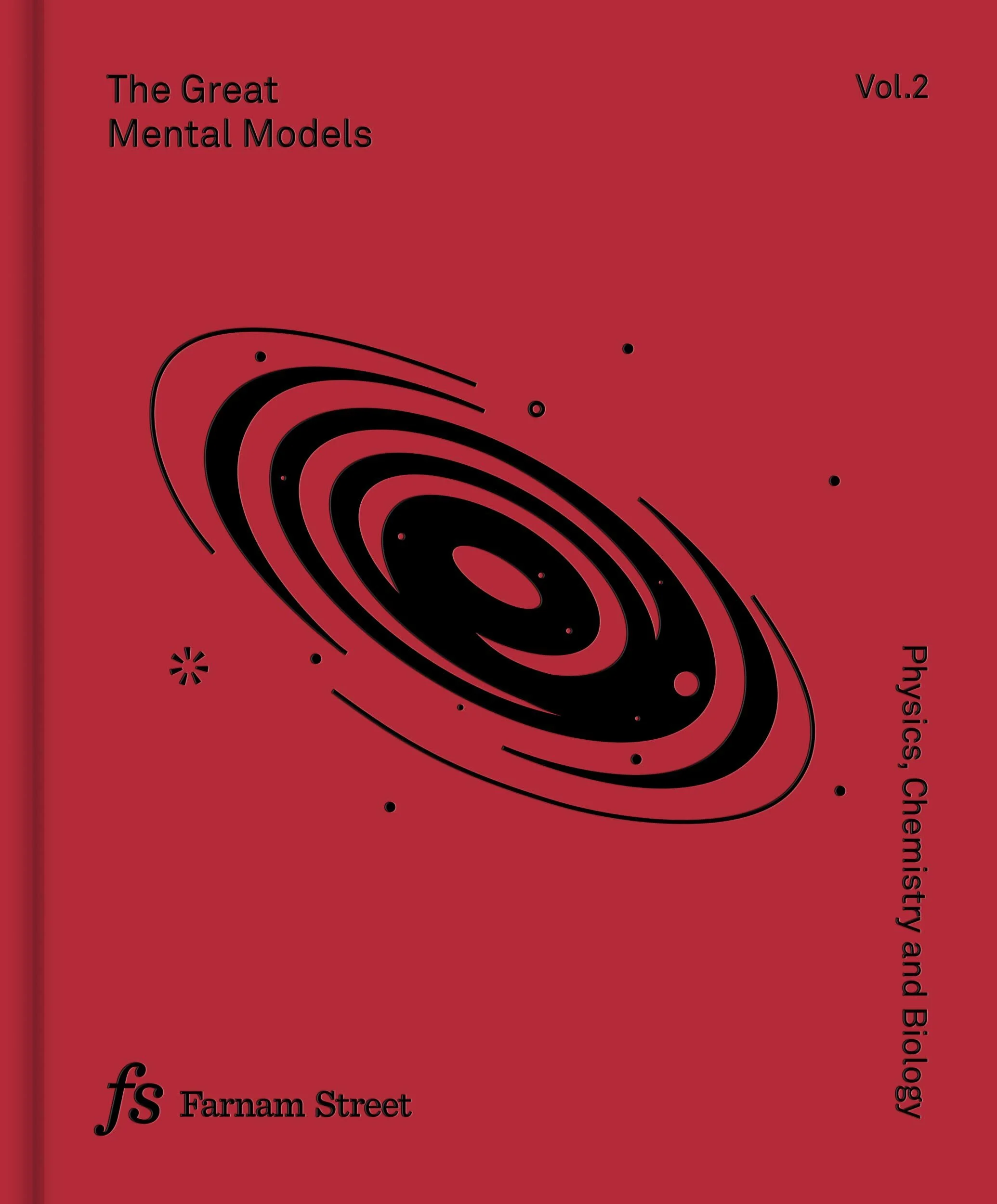The Great Mental Models: Volume 3, Systems and Mathematics – by Farnam Street
Date read: 2/11/22. Recommendation: 8/10.
I love this series. Volume One focuses on mental models from general thinking concepts. Volume Two focuses on physics, chemistry, and biology. And this volume focuses on arming you with mental models from systems thinking and mathematics. It’s a beautifully designed book, just like the others. And they do a wonderful job relating what are often dense, abstract concepts back to real-life applications. My favorite sections discussed feedback loops, margin of safety, emergence, surface area, and global + local maxima.
See my notes below or Amazon for details and reviews.
My Notes:
Systems thinking:
“Systems thinking is a discipline for seeing wholes. It is a framework for seeing interrelationships rather than things, for seeing patterns of change rather than static snapshots.” Peter Senge
Feedback loops:
“The people you spend the most time with are the ones who give you the most feedback on your behavior and thus have the most impact on the choices you make and the ways you change.” FS
Bottlenecks versus constraints:
“A bottleneck is something we can alleviate; a constraint is a fundamental limitation of the system. So a machine that keeps breaking down is a bottleneck, but the fact there are twenty-four hours in the day is a constraint.” FS
Margin of safety:
“A margin of safety is often necessary to ensure systems can handle stressors and unpredictable circumstances.” FS
Drive towards self-sufficiency: “Life will throw at you challenges that require capabilities outside of your natural strengths. The only way to be ready is to first build as cast a repertoire of knowledge as you can in anticipation of the possibilities you might face, and second to cultivate the ability to know what is relevant and useful.” FS
“Knowledge then can be conceptualized as a margin of safety, a buffer against the inevitable unexpected challenges that you will have to face.” FS
Churn:
A certain level of churn is a healthy part of systems, some degree of turnover creates stability and if it’s not occurring, it must be built in. It brings fresh ideas in, allows others to step up, and allows the system to adapt/evolve.
Sovereign individual: “People being able to leave as they wish places checks on abuses of power. The same is true for countries or companies. People need the freedom to vote with their feet if things get too bad.” FS
Algorithms:
Algorithms turn inputs into outputs: “An algorithm is a methodical set of steps that can be used to make calculations, resolve problems, and reach decisions. An algorithm isn’t a particular calculation, but the method followed when making the calculation.” Yuval Noah Harari
Emergence:
Focus on your starting point—stack the skills that you’re naturally drawn towards—and the way that impacts your trajectory: “You don’t always need to plan things all the way to the end. If you have a simple starting point on the right trajectory, surprising things can pan out through the power of emergence.” FS
Compounding:
“Humans have evolved to be pretty good at using past experience to guide future decisions, so a lot of knowledge compounding happens naturally over time, especially when we are young. But sometimes we get stale. We stop reinvesting that interest because we stop challenging ourselves. We stop compounding our learning. Twenty years of living become the same year repeated 20 times.” FS
Randomness:
“Randomness as a model reminds us that sometimes our pattern-seeking, narrative-building tendencies can be unproductive. Using randomness as a tool can help us get a fresh perspective and lift us out of the ruts we have built.” FS
Surface area:
“Surface area is useful when considering the amount of dependencies or assumptions something has. A program whose code has little surface area is much more likely to age well and be robust than a piece with many dependencies. The same goes for projects. If a project depends on ten teams, it’s much less likely to finish on time than one with less surface area.” FS
Multidisciplinary approach increases your personal surface area, allowing you make more connections and outthink others.
Different situations require different surface areas.
Global and local maxima:
Sigmoid curve: “Using global and local maxima as a model is about knowing when you have hit your peak, or if there is still potential to go higher. It reminds us that sometimes we have to go down to go back up.” FS
Hill climbing: Requires changing your approach, you have to take a few steps down to reach the peak of a higher hill. This requires perspective and assessing the terrain from different vantage points. This is all about playing the long game, not clinging to the comfort of your current position.


